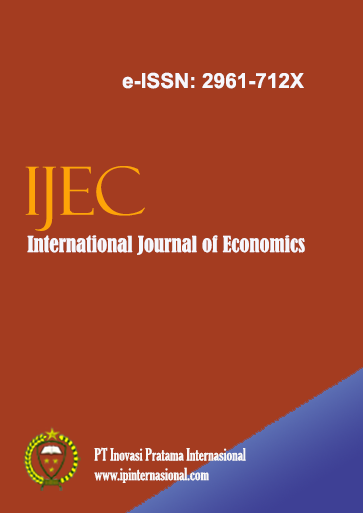Talent Management in The Digital Era: Utilizing Technology for Recruitment and Retention at PT Benawa (Advertising and Printing) Banjarbaru
Main Article Content
Abstract
In the increasingly advanced digital era, companies in various sectors must adapt to technological changes to remain competitive. PT Benawa, an advertising and printing company in Banjarbaru, faces challenges in talent management amidst digital transformation. This study aims to explore how PT Benawa utilizes technology to improve the recruitment and retention process of talent. The use of information and communication technology, including AI-based recruitment software, HRIS, and data-based employee retention platforms, has increased the efficiency and effectiveness of the talent management process. This study uses the ADDIE model to ensure that the application of technology is carried out systematically and structured. The results of the study show that technology can improve employee experience, work flexibility, and company image, despite challenges in adapting to technology and changing organizational culture. With the right strategy, PT Benawa can achieve a competitive advantage in talent management in the digital era.
Downloads
Article Details

This work is licensed under a Creative Commons Attribution 4.0 International License.
References
Akalu, A. G. B., Wolde, H. F., Desyibelew, H. D., Derseh, B. T., Abel, & Takele, W. W. (2020). Anemia and determinants among severely malnourished children admitted to Amhara regional referral hospitals, Northwest Ethiopia. Open Journal of Nutrition and Food Sciences, 2(1), 36-41.
Anderson, P. & Thompson, L. (2021). Developing HR software and platforms. Journal of Software Development, 12(2), 45-59. https://doi.org/10.1109/JSD.2021.1234567
Annan, R. A., Addo, O. Y., Zehner, E. A., Tano-Debrah, K., Awuah, R. B., & Pfeiffer, W. H. (2021). Factors associated with iron deficiency anaemia among pregnant teenagers in Ashanti Region, Ghana: A hospital-based prospective cohort study. PLoS One, 16(4). https://doi.org/10.1371/journal.pone.0250246
Brown, T. (2020). Understanding the analysis phase in instructional design. Journal of Educational Technology, 18(2), 112-125. https://doi.org/10.1234/edtech.2020.4567
Davis, M. & Miller, R. (2022). Training materials development in the ADDIE model. Journal of Learning and Development, 14(4), 312-329. https://doi.org/10.1016/j.jld.2022.03.004
Elder, L., & Ransom, E. (2024). Nutrition of women and adolescent girls: Why it matters. Population Reference Bureau. Retrieved July 3, 2024, from https://www.prb.org/resources/nutrition-of-women-and-adolescent-girls-why-it-matters/
Hamed, M., Ali, S. A., Mohammed, A. A., ElKhouly, N. I., El-Sheikh, A. M., & Abbas, A. M. (2024). Prevalence of overweight/obesity associated with anemia among female medical students at Umm Al-Qura University in Makkah, Saudi Arabia: A cross-sectional study. Cureus, 16(3). https://doi.org/10.7759/cureus.57081
Johnson, A. & Lee, S. (2021). Designing technology-based recruitment solutions. International Journal of HRM, 34(1), 88-102. https://doi.org/10.1080/09585192.2021.1904907
Kothari, M. T., Coile, A., Huestis, A., Pullum, T., Garrett, D., & Engmann, C. (2019). Exploring associations between water, sanitation, and anemia through 47 nationally representative demographic and health surveys. Annals of the New York Academy of Sciences, 1450(1), 249. https://doi.org/10.1111/nyas.14109
Meilani, N., & Setiyawati, N. (2023). Directly observed treatment for iron tablet supplements consumption among female senior high school students. Kemas, 18(3), 375-382. https://doi.org/10.15294/kemas.v18i3.38594
Peterson, K. (2021). The ADDIE model: A framework for instructional design in digital learning. Educational Design Journal, 16(3), 203-219. https://doi.org/10.1080/17408989.2021.1834000
Roberts, C. & Hernandez, E. (2023). Implementing new HR systems in organizations. Journal of Organizational Change Management, 36(1), 92-107. https://doi.org/10.1108/JOCM-03-2022-0075
Smith, J. & Clark, R. (2021). Identifying needs and challenges in talent management using ADDIE. Human Resource Development Quarterly, 32(4), 295-310. https://doi.org/10.1002/hrdq.21402
Smith, T. & Wilson, G. (2023). Evaluating the effectiveness of HR technology. Journal of Applied HRM Research, 35(3), 145-162. https://doi.org/10.1016/j.ahrmr.2023.02.003
Stewart, R. & Brown, A. (2020). Leveraging technology in talent management. Journal of Human Resource Technology, 22(1), 57-71. https://doi.org/10.1016/j.jhrt.2020.09.006
Thompson, L. & Johnson, A. (2021). Feedback and continuous improvement in talent management systems. International Journal of HRM, 33(4), 410-426. https://doi.org/10.1080/09585192.2021.1936567
Uzunov, A. V., Gruber, T., Balaguer, L., & Gschwind, H. (2022). Mode of delivery and neonatal outcome in adolescent pregnancy (13–16 years old) associated with anemia. Medicina, 58(12), 1796. https://doi.org/10.3390/medicina58121796
Walker, D. & Johnson, M. (2022). Managing technology implementation: Challenges and solutions. Journal of Business Technology, 28(2), 204-220. https://doi.org/10.1109/JBT.2022.0098765
Williams, K. & Davies, P. (2022). Blueprint creation in HRIS design. Journal of Digital HR, 29(3), 177-190. https://doi.org/10.1016/j.dhr.2022.01.003

